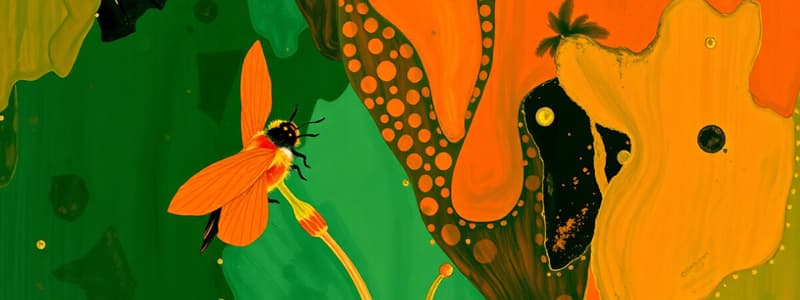Podcast
Questions and Answers
The process of pollination begins after the pollen grain lands on the stigma of a flower.
The process of pollination begins after the pollen grain lands on the stigma of a flower.
True (A)
During dispersal, seeds are spread by natural methods such as wind and animal fur.
During dispersal, seeds are spread by natural methods such as wind and animal fur.
True (A)
A combine is a machine that separates a plant's grain from the rest of its parts during harvest.
A combine is a machine that separates a plant's grain from the rest of its parts during harvest.
True (A)
The process of fertilization happens before the pollen grain reaches the ovule in a flower.
The process of fertilization happens before the pollen grain reaches the ovule in a flower.
Bees are responsible for pollinating more crops than any other insect.
Bees are responsible for pollinating more crops than any other insect.
Seeds are killed primarily by exposure to cold temperatures.
Seeds are killed primarily by exposure to cold temperatures.
Cones are produced by trees that have flowers rather than cones.
Cones are produced by trees that have flowers rather than cones.
Female cones, containing ovules, are larger in size compared to male cones.
Female cones, containing ovules, are larger in size compared to male cones.
Flashcards
Pollination
Pollination
The transfer of pollen from the male to the female part of a flower, crucial for seed formation.
Pollen Tube
Pollen Tube
A tube that forms after a pollen grain lands on the stigma, allowing sperm to reach the ovule.
Dispersal
Dispersal
The process of transporting seeds away from the parent plant to grow in different locations.
Self-Pollination
Self-Pollination
Signup and view all the flashcards
Cross-Pollination
Cross-Pollination
Signup and view all the flashcards
Female Cones
Female Cones
Signup and view all the flashcards
Male Cones
Male Cones
Signup and view all the flashcards
Artificial Pollination
Artificial Pollination
Signup and view all the flashcards
Study Notes
Pollination
- Pollination can be self-pollination or cross-pollination
- Occurs when pollen lands on the stigma of a flower
- Pollen tube forms, transferring cells from pollen to ovule
- Ovule develops into a seed
Pollinators
- Dispersal is the transport of seeds from the parent plant
- Many methods including wind, water, animals (birds, insects)
- Farmers use machines for seed dispersal
- Crop harvesting involves cutting and separating grain from the plant
- Straw is often baled or spread on fields
Cones
- Cones are woody structures on trees
- Male and female cones produce pollen and ovules
- Wind carries pollen to female cones
- Pollen fertilizes ovules and seeds develop
- Seeds are distributed in the fall/winter
Reproduction Without Seeds
- Asexual reproduction creates genetically identical offspring
- New plants grow from roots, stems, or leaves of the parent
- Example methods include runners, stem cuttings, and grafting
Studying That Suits You
Use AI to generate personalized quizzes and flashcards to suit your learning preferences.



